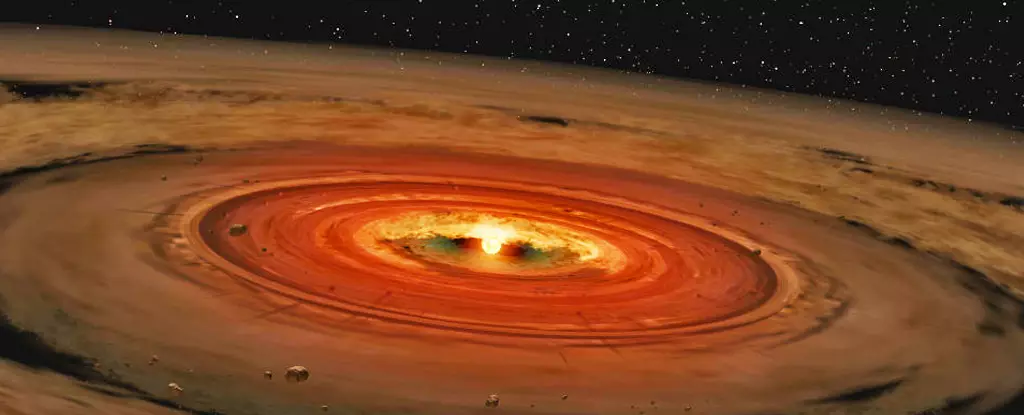In the vast expanse of space around 1,000 light-years from Earth, a spectacular cosmic structure known as IRAS 23077+6707, resembling a giant butterfly, captured the attention of astronomers. This intriguing discovery was first observed by Ciprian T. Berghea, an astronomer with the US Naval Observatory, using the Panoramic Survey Telescope and Rapid Response System (Pan-STARRS) in 2016. Despite the passage of years, IRAS 23077 has remained unchanged, igniting curiosity and prompting further investigation into its nature and origin.
The subsequent exploration of IRAS 23077 by two international teams of astronomers utilizing the Submillimeter Array at the Smithsonian Astrophysical Observatory (SAO) in Hawaii revealed fascinating insights into this cosmic phenomenon. In a series of papers detailing their findings, it was unveiled that IRAS 23077 is not merely a captivating structure but a young star enveloped by an immense protoplanetary debris disk – the largest of its kind ever observed. This groundbreaking discovery sheds new light on the process of planet formation and the environments conducive to such cosmic phenomena.
Protoplanetary disks serve as the cradles for nascent planets, harboring gas and dust particles that coalesce around newly formed stars. These disks evolve over time, transforming into rings as matter aggregates into protoplanets occupying distinct orbits, destined to shape the varied celestial bodies within planetary systems. Astronomers leverage the presence of these disks to glean crucial details about the size and mass of young stars, as their distinctive rotational signatures offer valuable clues. However, the observation of protoplanetary disks can be challenging, particularly when their orientation relative to Earth obstructs direct visibility.
The collaborative efforts of the Pan-STARRS and SWA teams, employing the observational power of their respective telescopes, uncovered astonishing revelations about IRAS 23077. Kristina Monsch, an SAO astrophysicist and postdoctoral fellow at the CfA, spearheaded the Submillimeter Array (SMA) campaign, providing invaluable insights into the nature of this celestial giant. Through meticulous examination, Monsch and her team verified the existence of the protoplanetary disk encircling IRAS 23077, characterized by an abundance of dust and gas – the essential building blocks of planets.
Inspired by the structure’s resemblance to a giant butterfly and the implications of its discovery, Ciprian Berghea proposed the moniker “Dracula’s Chivito” to pay homage to the enigmatic entity. This playful designation, blending elements of folklore and culinary references, adds a touch of whimsy to the scientific discourse surrounding IRAS 23077. The profound implications of this discovery extend beyond the confines of our immediate cosmic neighborhood, prompting astronomers to explore similar objects within our galaxy and unravel the mysteries of planet formation in extreme young environments.
The unveiling of IRAS 23077 and its monumental protoplanetary disk not only expands our understanding of celestial phenomena but also paves the way for future astronomical endeavors. By scrutinizing this cosmic marvel, astronomers can gain valuable insights into the earliest stages of planetary system formation, offering a glimpse into the intricate processes that shaped our own Solar System. The discovery of IRAS 23077 challenges researchers to delve deeper into the realm of planet formation and investigate the diverse planetary populations that populate the vast expanse of the cosmos.
The discovery of IRAS 23077 and its colossal protoplanetary disk stands as a testament to the marvels of the universe and the insatiable curiosity that drives astronomical exploration. As scientists continue to unravel the mysteries of celestial bodies, each new discovery offers a fresh perspective on the intricate tapestry of cosmic evolution, underscoring the boundless wonders that await us in the depths of space. Through diligent observation and collaborative research efforts, we inch closer to unlocking the secrets of the cosmos and unraveling the enigmas that shroud the celestial realms beyond.


Leave a Reply